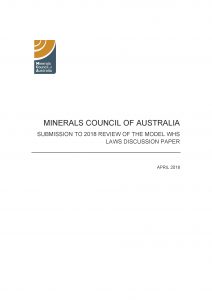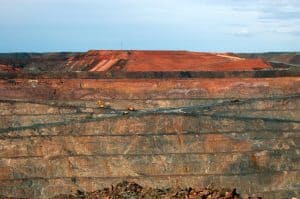Western Australia’s Parliament heard more about the State’s investigation into work-related mental health on June 26 2018.
Category: mining
Read widely, carefully and analytically.
 One of the most rewarding sources of occupational health and safety (OHS) information is the literature review undertaken by, usually, university researchers. It is rewarding because someone else has done most of the reading for you and the spread of resources can be massive and/or global. But, there can also be missed opportunities from taking a narrow scope and from excluding some non-peer-reviewed analysis. One of these involves a systematic review of lost-time injuries in the global mining industry.
One of the most rewarding sources of occupational health and safety (OHS) information is the literature review undertaken by, usually, university researchers. It is rewarding because someone else has done most of the reading for you and the spread of resources can be massive and/or global. But, there can also be missed opportunities from taking a narrow scope and from excluding some non-peer-reviewed analysis. One of these involves a systematic review of lost-time injuries in the global mining industry.
Toughen up, Princess
 Today the Medical Journal of Australia released a media statement entitled:
Today the Medical Journal of Australia released a media statement entitled:
“FIFO workers’ psychological distress “alarming””
What is more alarming is that the levels of psychological distress have remained high even though there have been inquiries into the mental health of Fly-In Fly-Out workers in Western Australia and Queensland since 2014!!
Western Australian research undertaken by
First WHS Review submission released is hard work but useful
 The Minerals Council of Australia (MCA) has released its submission to the Independent Review of Work Health and Safety Laws. It is a good example of the business-speak that can erode the effectiveness of clear communication, but the submission is still revealing. Here is an example from its Executive Summary:
The Minerals Council of Australia (MCA) has released its submission to the Independent Review of Work Health and Safety Laws. It is a good example of the business-speak that can erode the effectiveness of clear communication, but the submission is still revealing. Here is an example from its Executive Summary:
“A nationally-consistent, risk-based preventative Work Health and Safety (WHS) regulatory system, supported by industry-specific regulation, would deliver benefits based on greater certainty, consistency and efficiency. It would also help to ensure that compliance challenges do not detract from the practical tasks of identifying, managing and minimising risk and the continuous improvement of safety and health outcomes by companies.” (Page 3)
So, the MCA wants national occupational health and safety (OHS) laws?
FIFO, Fairness and the Future

SafetyAtWorkBlog’s article about the safety of Fly-In, Fly-Out workers has generated some discussion through its mention on LinkedIn which has raised some interesting points.
A common thread seems to be that it is impractical to build townships and facilities to support remote mine workers and which also provide services to workers’ families. One commenter posed these questions:
“Are we going to drag the FIFO families out to these areas, build houses for them, along with all the associated infrastructure to support them, for what may be only a 3-5 year construction program? Is it fair to drag the partners and families of FIFO workers away from their family supports (parents/friends, etc)? Away from decent medical care? Away from schools/universities?”
This may have been intended as rhetorical but prompts a question that I frequently ask when I consult with clients – “why not?”
We need to ask tougher questions about FIFO
On the recommendation of one of my subscribers I am currently listening to a podcast called Food For Thought which includes a discussion on the mental health issues associated with the Fly-In -Fly-Out (FIFO) work structure. This article is being written as I listen to the podcast so follows the threads as spoken.
Various major Australian inquiries have been held into the occupational health and safety of FIFO workers for the mining sector. The potential psychological harm of FIFO is indisputable so why aren’t we asking the tough questions and thinking about the harm that we are allowing to occur?

Continue reading “We need to ask tougher questions about FIFO”
Queensland’s “production versus protection dichotomy”

Last week the Queensland Government proposed changing some of the health and safety laws that relate to mining. Changes to occupational health and safety (OHS) laws that improve workplace safety are almost always welcome, but to some extent these recent changes are “catch-up”.
The Government’s media statement of the proposed laws is very positive and the changes are largely very good. Natural Resources, Mines and Energy Minister Dr Anthony Lynham is quoted saying
“The Department’s mines inspectorate through their investigations have found that one of the causes of an increase in risk is due to contractors not having a full understanding of the SHMS on the mining site…”
